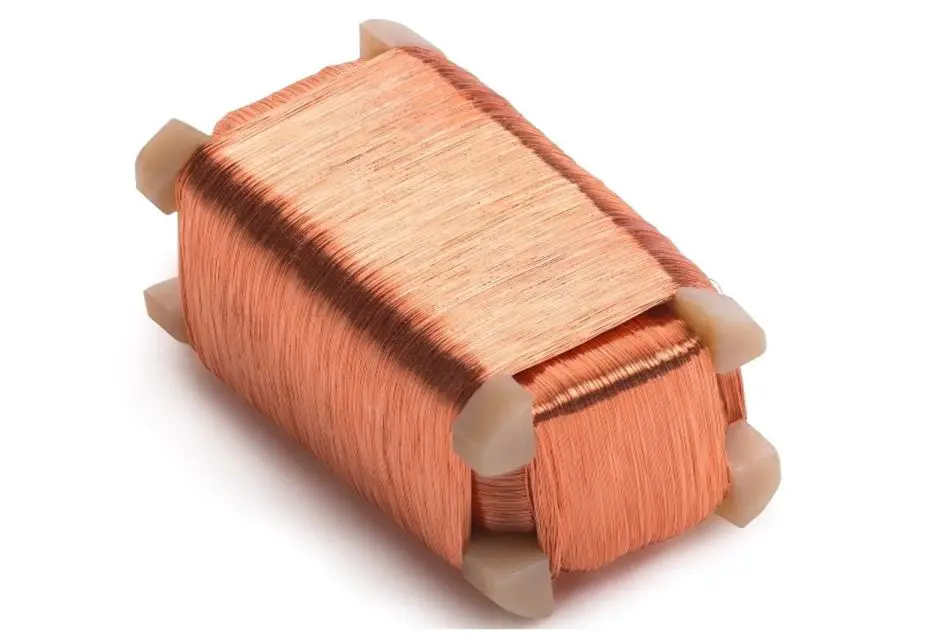An electromagnetic coil is nothing but an electrical conductor in a spiral or helix form. The coils are used in several devices where electric currents interact with magnetic fields, like generators, inductors, electric motors, etc.
I. Understanding Electromagnetic Coils
A. Structure and Composition
In an electromagnetic coil, a helical wire is wound around a cylindrical core in ferromagnetic materials like iron or steel. Because of its high electrical conductivity and low resistance, copper is usually used to make the wires.
B. Turns and Layers
The number of turns and the arrangement of wire layers determine the characteristics of the coil, including its inductance, resistance, and magnetic field strength. Coils with more turns generally exhibit greater inductance, which is the property that enables them to store energy in the form of a magnetic field.
II. Working Principles
A. Magnetic Field Generation
A magnetic field is created when an electric current flows through the wire of an electromagnetic coil. The electric current and the wire’s magnetic field interact, resulting in this. The amount of current passing through the coil directly correlates with the strength of the magnetic field.
B. Electromagnetic Induction
Electromagnetic curls likewise assume a pivotal part in electromagnetic enlistment. An electric current is created within a wire when a varying magnetic field passes through a coil. This rule frames the premise of transformers, generators, and different other electrical gadgets.
III. Applications of Electromagnetic Coils
A. Electromagnetic Relays
Electromagnetic relays utilize coils to control the switching of electrical circuits. When a current is applied to the coil, it generates a magnetic field that attracts or repels a movable armature, thus opening or closing the circuit.
B. Inductors
Inductors, another essential application of electromagnetic coils, store energy in the form of a magnetic field. They are widely used in electronic circuits to control current flow, filter signals, and store energy for brief periods.
C. Solenoid Valves
Solenoid valves employ electromagnetic coils to control the flow of fluids or gases. When the coil is energized, it generates a magnetic field that opens or closes the valve, allowing or blocking the passage of the fluid.
D. Electromagnetic Motors
Electromagnetic coils serve as the powerhouse behind electric motors. By creating rotating magnetic fields, these coils generate the necessary force to drive the motor’s mechanical components, enabling various applications in industries and transportation.
IV. Future Prospects and Advancements
As technology continues to advance, electromagnetic coils are poised to play an even more significant role in various domains. Ongoing research focuses on improving coil efficiency, reducing energy losses, and exploring new materials for enhanced performance. These progressions might prompt the advancement of additional proficient gadgets, further developed environmentally friendly power frameworks, and energizing applications yet to be found.
Conclusion:
Electromagnetic coils are flexible parts that empower the transformation of electrical energy into magnetic fields as well as the other way around. Their applications span numerous industries, making them indispensable for modern technology. By understanding the construction, working principles, and applications of electromagnetic coils, we gain a deeper appreciation for their crucial role in powering our world.






![YouTube SEO in 2024 [Definitive Guide]](https://getpixie.com/wp-content/uploads/2024/02/shutterstock_1684828252-1-150x150.jpg)








